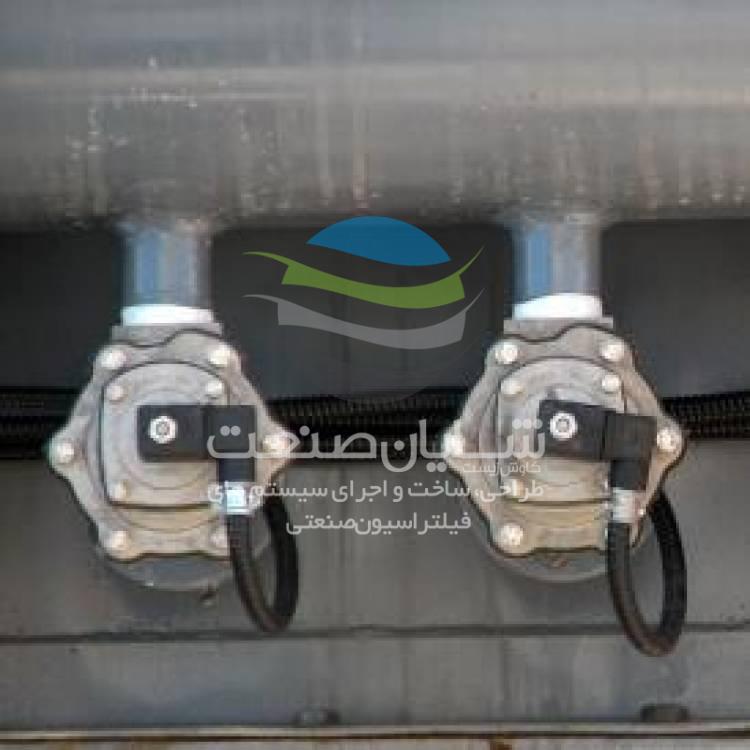What is a solenoid valve and how does it work?
What is the function of the solenoid valve solenoid valve
and how do they work?
A hydraulic solenoid valve is a valve that operates by applying electrical force and regulates or regulates the flow of fluid in a hydraulic system. The hydraulic solenoid valve consists of a valve that has a solenoid mechanism that is capable of It is connected to the fluid flow or controls it, it is connected. This change is based on a command received from the control system.
Note: Fluid: Liquids and gases are called fluids.
How the solenoid valve works:
As we can see in the figure below, the solenoid valve is composed of two important parts, the solenoid and the main valve (body).
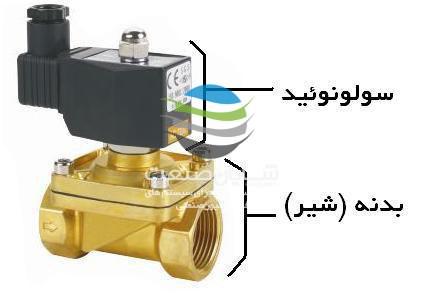
The solenoid part itself includes the coil, iron rod, spring, control valve and control channel. The main valve consists of inlet, outlet, diaphragm and diaphragm spring. When the solenoid is active, very little fluid always flows through the duct and control valve. In solenoid valves, rubber or metal seals are used to seal different places. A spring (diaphragm spring) is also used to open or hold the diaphragm when the valve is inactive.
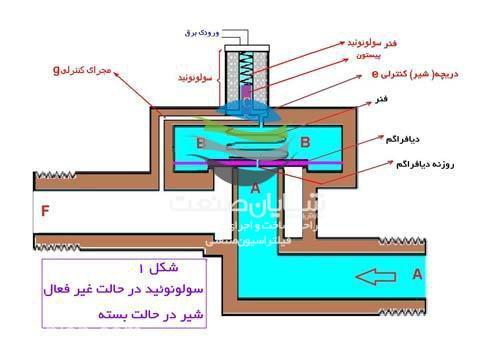
The design of a simple valve in the inactive state and closed path Suppose the
fluid used in this valve is water.
Inlet water presses on the diaphragm in sections A and B. A relatively weak spring also pushes the diaphragm down. The diaphragm has a small hole that allows water to pass through (from part A to part B). The liquid fills through the hole in chamber B, and after filling, the water pressure at both ends of the diaphragm equalizes. The compressed spring applies a slight downward pressure to the diaphragm. The spring power is weak and it only has the ability to keep it closed by pressing on the diaphragm when the pressure is equal at the top and bottom of the diaphragm. As a result, the valve is closed and water will not pass through the valve.
What happens when a solenoid is energized?
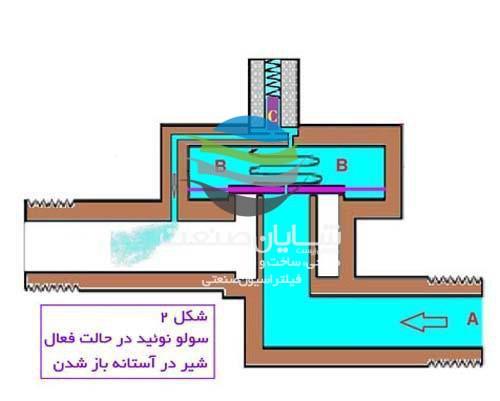
Figure 2 Solenoid when plugged in
When the solenoid is energized, the magnetic force of the solenoid pulls the rod C upwards and the control valve e opens. When e opens, a very small stream of water is directed from part B through the control duct g to the outlet. As a result, the pressure in part B is reduced and the pressure A overcomes the high pressure of the diaphragm (pressure + spring force B) and Pushes the diaphragm upwards.
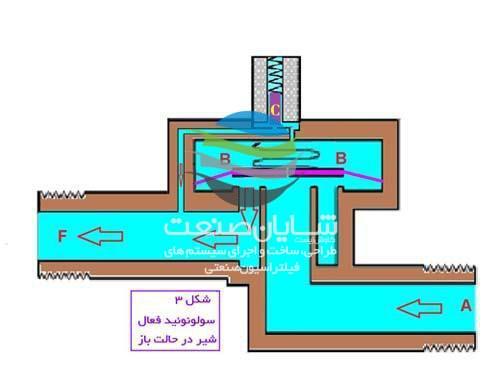
Figure 3 occurs exactly after the pressure drop above the diaphragm.
As a result, the main valve opens and water flows directly from A to F. When the solenoid is active, very little fluid always flows through the duct and control valve. When the solenoid is deactivated again, the control path e is closed by the C rod and the spring requires very little force to push the diaphragm down and close the main path. From the above explanations, it can be seen that such valves operate due to the pressure difference below and above the diaphragm, and if the high diaphragm pressure is higher than the inlet pressure for any reason (regardless of whether the solenoid is active or not), the valve will not work.
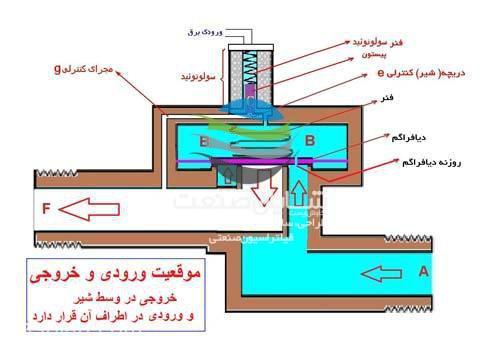
Solenoid valves are divided into different types such as multi-way, type of power consumption (DC) or AC) and its condition in OFF and حالت mode. In some valve solenoids, the solenoid commands the valve directly. Some solenoids themselves are used as an auxiliary and control valve to start a larger valve.

